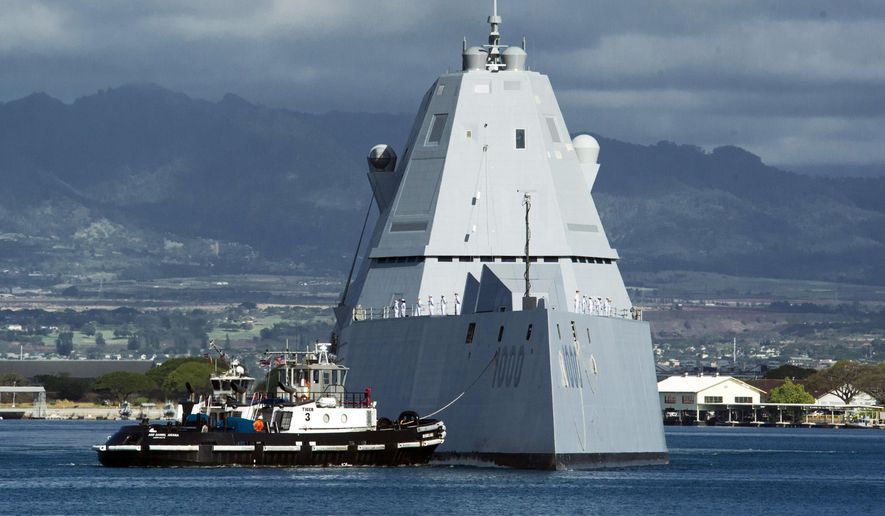The USS Zumwalt, one of the Navy’s new class of guided missile destroyers, arrived Monday in Japan in what officials said is its farthest deployment from its home port in San Diego, California.
The Zumwalt, commissioned six years ago, is assigned to Destroyer Squadron 15, the principal surface force of the Navy’s Pacific-focused 7th Fleet. The current mission could set the stage for the eventual deployment of U.S. hypersonic missiles to the region.
Lawmakers have pushed for the Navy to mount the Common Hypersonic Glide Body Missile (C-HGB) to Zumwalt-class destroyers. The missile uses booster rockets to fire missiles at hypersonic speeds — that is, more than five times the speed of sound.
The U.S. Naval Institute said the Navy will remove two 155mm Advanced Gun System mounts aboard each ship to install tubes needed to accommodate the hypersonic missile’s vertical launch system.
Both the Pentagon and Congress have shown a growing interest in pursuing the development and near-term deployment of hypersonic systems. Analysts say this is due in part to the advances in these technologies in Russia and China.
“Both of which have a number of hypersonic weapons programs and have likely fielded operational hypersonic glide vehicles, potentially armed with nuclear warheads,” according to a July 2022 study by the Congressional Research Service.
The Zumwalt guided missile destroyers are 610 feet long and displace about 16,000 tons. They are about 100 feet longer and 6,000 tons heavier than Arleigh Burke-class destroyers, considered the backbone of the Navy’s surface combat fleet.
The Navy has budgeted three ships in the Zumwalt class.
The type 055 destroyer, China’s largest surface combatant ship, is 590 feet long and displaces about 12,000 tons.
While smaller in size, the People’s Liberation Army Navy (PLA-N) has at least six active Type 055 destroyers, compared to three Zumwalt-class destroyers.
China also has launched a massive shipbuilding program that has seen Beijing overtake the U.S. as having the world’s largest navy.
• Mike Glenn can be reached at mglenn@washingtontimes.com.




Please read our comment policy before commenting.